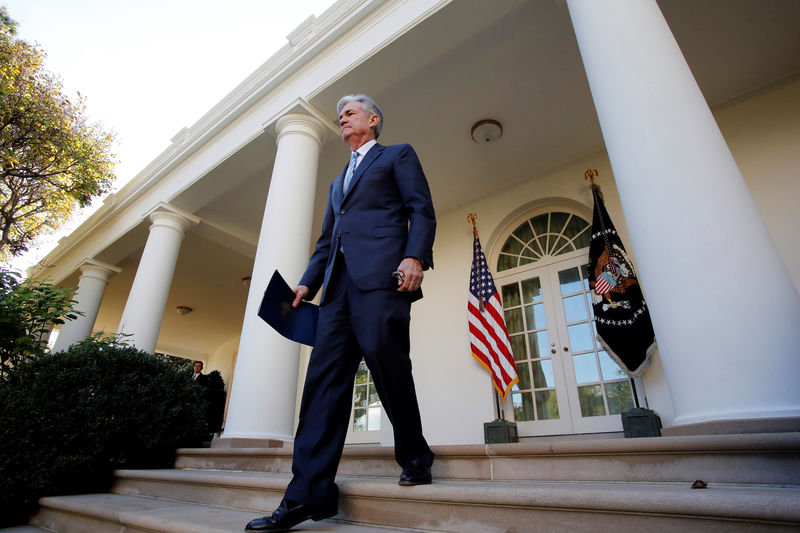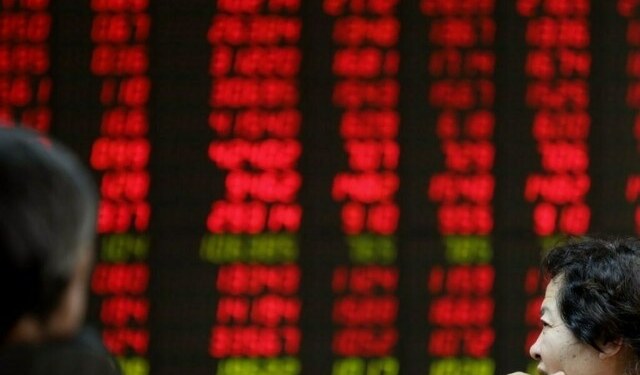 © Reuters. Jerome Powell arrives in the Rose Garden as he attends an announcement as nominee to become chairman of the U.S. Federal Reserve by U.S. President Donald Trump (not pictured) at the White House in Washington
© Reuters. Jerome Powell arrives in the Rose Garden as he attends an announcement as nominee to become chairman of the U.S. Federal Reserve by U.S. President Donald Trump (not pictured) at the White House in WashingtonBy Richard Leong
NEW YORK (Reuters) – President Donald Trump’s nomination of Jerome Powell as the next Federal Reserve chair on Thursday was greeted with a potentially ominous signal from the bond market: the U.S. Treasury yield curve flattened.
Trump formally confirmed his selection of Powell, a 64-year-old Fed board governor and former investment banker to succeed current Fed Chair Janet Yellen whose term expires in February.
The shape of the Treasury yield curve, which plots the yields of the various debt securities issued by the U.S. government, often reflects investors’ perceptions of the health of the economy and the outlook for inflation.
A steeper curve, when long-term yields rise relative to shorter-dated yields, typically augurs brisker economic growth and inflation. A flatter one, when the gap between short and long term yields narrows, most often occurs as the Fed is raising short-term interest rates as it is now, and signals a muted outlook for both growth and inflation.
Bond investors are gearing up for a flatter yield curve as Powell is widely expected to continue to raise interest rates gradually, as Yellen began to do in late 2015, and to shrink the central bank’s $4.5 trillion balance sheet.
“There’s already a picked path for him,” said Aaron Kohli, interest rate strategist at BMO Capital Markets in New York. “He wouldn’t be supportive for wholesale policy changes.”
Since the Fed moved away from its near-zero rate policy nearly two years ago, the five-year and 30-year part of the yield curve has shrunken by 43 basis points.
As investors waited for Trump’s announcement on Powell in recent days, the yield gap between five-year and 30-year Treasuries contracted to 82 basis points, a level not seen since late 2007, Tradeweb data showed.
“Going forward, I am most focused on the shape of the yield curve – it’s going to tell us a lot,” Scott Minerd, global chief investment officer with Guggenheim Partners said in a tweet on Wednesday.
However, if the tax plan outlined by Republicans in the U.S. House of Representatives on Thursday were to pass through the Senate, it may stoke selling in long-maturity bonds due to concerns about a widening in the fiscal deficit, steepening the yield curve.
And if the economy falters in the coming months due to say political instability abroad or a sustained rout in Wall Street stocks, the yield curve may also steepen again as traders would bet short-term yields would fall in anticipation of the Fed cutting interest rates again.
But for now the flattening trend in the yield curve is expected to continue under a Powell-led Fed, as with little evidence of inflation accelerating globally, long-term bond yields may stay close to current levels.
The core rate on personal consumption expenditure, the Fed’s preferred inflation gauge, edged up 0.1 percent in September. This brought its 12-month increase to 1.3 percent, undershooting the central bank’s 2 percent target for about 5-1/2 years.
“We are going to see the curve flatter until we see a pickup in inflation,” said Sean Simko, head of fixed income investment at SEI Investments Co. in Oaks, Pennsylvania.
Source: Investing.com



























